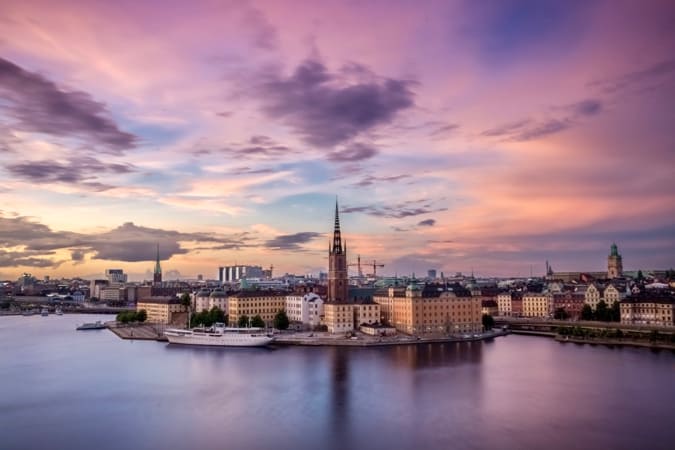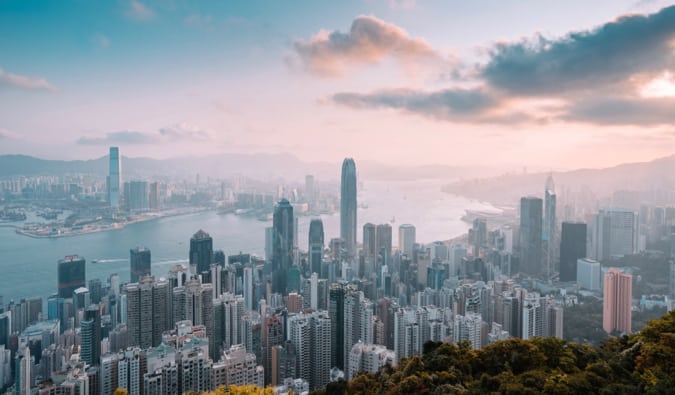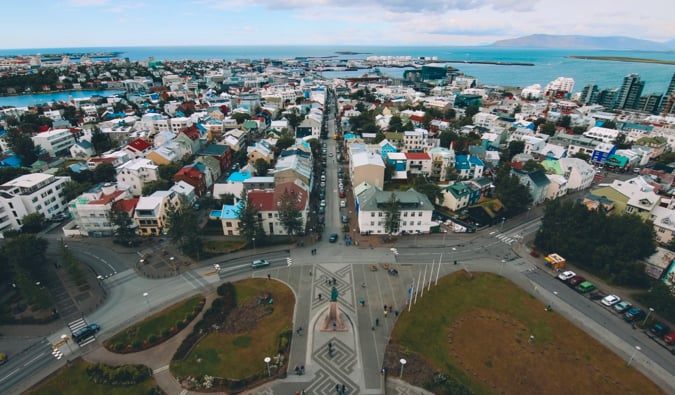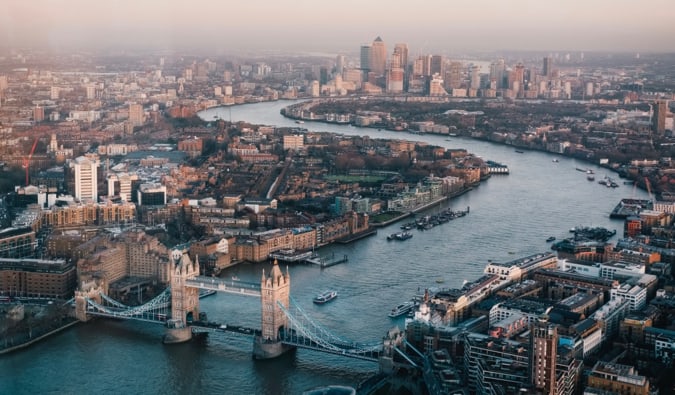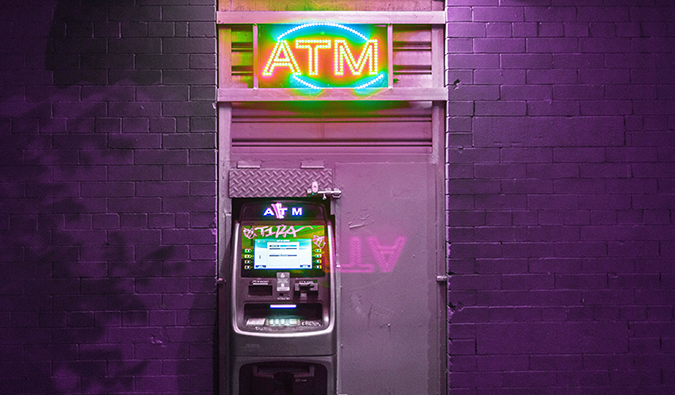
Finding the money for travel is one of the biggest challenges people face when it comes to taking a trip. It can take years to save up for that dream trip!
And, when people finally save up enough and hit the road, what do most of them end up doing?
They throw money away on avoidable bank fees!!
Banking overseas is more than just putting your card in an ATM and taking out money. When you travel on a budget, it involves knowing how to avoid bank fees, exchange rate penalties, and making your money work for you.
I know too many people who travel abroad and end up paying obscene bank fees when they travel.
And, these days, there’s absolutely no need to do that. You didn’t save up all this money in order to give it to the banks, right? I know I didn’t. I want to keep it all for myself because every avoided fee is more money for food, drinks, and activities on the road!
Here is how you eliminate ALL bank fees when you travel in 5 easy steps:
1. Eliminate ATM Fees
ATM fees can really add up — especially if you’re traveling for weeks or months at a time. Let’s think about it: while you’re on the road, you might withdraw money from an ATM twice a week. If you withdraw money from an international ATM with your regular debit card, you’ll be hit with three different fees:
- Your bank’s fee for using an ATM outside of their network (usually $2.50–5 USD)
- The ATM’s fee (usually $3–5 USD)
- An international conversion fee (usually 1–3% of the transaction)
As you can see, these fees very quickly add up. Fees vary around the world, but let’s say that you end up paying around $7 USD per withdrawal. That is $14 per week, $56 per month, or $672 per year! Do you know how many days you could spend in Southeast Asia for that amount? Almost three weeks!
Even if you only use the ATM once a week, that’s still $364 USD per year. And most travelers I know go to the ATM even more than twice a week, which only increases the amount in fees they pay. Why give banks money you need for travel? You worked hard saving your money — don’t waste it by giving it to a bank.
To help you avoid fees, here are four things you’ll want to do on your next trip to eliminate those pesky fees:
First, you could join a bank that is part of the Global ATM alliance, the principal international banking network. The banks listed below have agreements with one another wherein if you belong to one bank, you can use the ATMs of all the other banks without being charged an ATM fee:
- Bank of America
- Barclay’s
- BNP Paribas
- Deutsche Bank
- Scotiabank
- Westpac
Note: Bank of America charges a 3% transaction fee on all non-USD currency withdrawals, even for banks within the alliance. (Tip: Often, if you call Bank of America, they will refund most or all of this transaction fee.)
Beyond these banks, individual alliance members have additional partnerships. For example, Bank of America also waives ATM fees with TEB in Turkey, UkrSibbank in Ukraine, and China Construction Bank in China. And Westpac has an agreement with CIMB, a bank in Indonesia and Malaysia.
It’s important to note that some country subsidiaries of the above banks might not be included in the ATM Alliance. For example, if you have Bank of America, the BNP Paribas waiver only works for its France operation (not anything else) while Westpac only works in Australia and New Zealand but not Fiji.
But, in my opinion, the best U.S. bank is Charles Schwab. While Charles Schwab doesn’t have deals with any banks overseas like those mentioned above, they don’t charge any ATM fees and will reimburse any ATM fees from other institutions at the end of each month. You will need to open an individual checking account to qualify, but there is no minimum deposit required and no monthly service fee.
You’ll never pay a fee with Charles Schwab, and their ATM card can be used in any bank machine around the world. If there isn’t a branch near you, you can open an account online by going to their website. To me, this is the current BEST ATM card to have. I never, ever think about fees because of it.
Here are some suggested ATM cards for non-US travelers:
- Canada: Scotia and Tangerine are both part of the Global ATM Alliance.
- Australia: ING, Citibank, or HSBC have no fee cards.
- UK: Starling lets you avoid ATM fees abroad. Monzo has fee-free international transactions for your first 200 GBP withdrawn every 30 days.
2. Avoid Credit Card Fees
The next major fee we need to get rid of is the credit card foreign transaction fee. Many credit cards charge a 3% fee on purchases made overseas. That can add up since most of us use our credit card for everything. It’s become a lot more common for credit cards to have “no foreign transaction fees” so it’s unlikely you’ll have a card that does but be sure to ask.
My favorite no overseas transaction fee cards are the Chase Sapphire Preferred, Capital One, and Citi Premier, but there are tons and tons of options and you should pick the card that not only doesn’t have a fee but is good for earning points too.
For more suggestions on credit cards, including best current offers, you can find all my favorite travel cards here.
For non-US citizens, check the following websites that list cards that might not charge any overseas fees:
- Australian Frequent Flyer (Australia)
- Credit Cards UK (UK)
- Prince of Travel (Canada)
- Credit Cards Compare (New Zealand)
3. Minimize the Exchange Rate “Penalty”
Every time you use your card overseas, your local bank converts the transaction into your local currency for billing purposes and takes a little off the top for doing so. Thus, the official rate you see online is not what you actually get. That’s the interbank rate and, unless you become a major bank, you’re not going to get that rate. All we can do is get as close to that rate as possible. To do so, you need to:
Use a credit card -Credit card companies get the best rates. Using a credit card will get you an exchange rate closest to the official interbank currency rate so avoid an ATM or cash if you can.
Use an ATM – ATMs offer the best exchange rate after credit cards. They aren’t as good as credit cards since commercial banks take a little more off the top, but it’s much better than exchanging cash. Money exchange offices offer the worst rates because they are so far down the food chain, they can’t get the best exchange rate (plus, they usually charge a commission as well).
Don’t use ATMs in weird locations – Using those ATMs you find in hotels, hostels, local 7-11s, or some other random place is a bad idea. They’re convenient, but you’ll pay for that convenience. They always charge high ATM fees and offer horrible conversion rates. Skip those ATMs and find a major bank.
4. Don’t Change Money at Airports
Most exchange bureaus in airports are so far down the financial food chain they don’t have the clout to offer good exchange rates. The rates you see at airports are the worst — never, ever use an exchange bureau there unless you absolutely have to.
Another tip: avoid using the company Travelex at all costs. They have the worst rates and fees. Never, never use them. Avoid their ATMs too!
5. Always Pick the Local Currency
When you use your credit card abroad, you will often be given the option to be charged in your home currency (i.e., instead of being charged in euros, they will charge you in US dollars). Never say yes. The rate at which they are converting the currency is always worse than the rate your bank will give you.
Pick the local currency and let your credit card company make the conversion. You’ll get a better rate and save some money in the process.
6. Don’t Get Currency at Home (and Skip Foreign Currency Cards!)
While buying currency at home might seem like a good idea, you’ll end up getting a worse exchange rate. Unless you are 100% sure you’ll need cash right on arrival, avoid exchanging money in your home country.
Airports all have ATMs where you can withdraw money if you desperately need it. (However, I suggest you wait until you get to your destination and withdraw money downtown/from an ATM away from the airport. You’ll get a much better rate and pay a much lower fee. Use your credit card on arrival and then get cash later.)
Additionally, avoid any “foreign currency cards” where you can pre-load money and lock in the exchange rate. Seems like a good idea, right? Wrong! You are basically trying to predict the exchange rate and betting you can beat the market. You’re saying this rate is not going to get worse, but what if it gets better? You don’t know! (And, if you do know, you should be placing bets in the market.) Moreover, these cards come with a lot of fees that don’t make them worth it. Just avoid them.
Bonus: Make Your Money Work For You
Saved a bunch of money for your trip? Have it earn extra money! Interest rates are around 4% right now so you can have your money earn something while you’re away. It’s not like you withdraw it all at once, right? I keep my money in a high-yield savings account rather than in a big bank! Here is a list of some of the current highest yields you can get:
Be smart and bank smart. I haven’t paid a bank fee while traveling the world in over fifteen years and you shouldn’t either.
And, with these simple tips, you’ll never have to again.
How to Travel the World on $75 a Day

My New York Times best-selling book to travel will teach you how to master the art of travel so that you’ll get off save money, always find deals, and have a deeper travel experience. It’s your A to Z planning guide that the BBC called the “bible for budget travelers.”
Book Your Trip: Logistical Tips and Tricks
Book Your Flight
Find a cheap flight by using Skyscanner. It’s my favorite search engine because it searches websites and airlines around the globe so you always know no stone is being left unturned.
Book Your Accommodation
You can book your hostel with Hostelworld. If you want to stay somewhere other than a hostel, use Booking.com as it consistently returns the cheapest rates for guesthouses and hotels.
Don’t Forget Travel Insurance
Travel insurance will protect you against illness, injury, theft, and cancellations. It’s comprehensive protection in case anything goes wrong. I never go on a trip without it as I’ve had to use it many times in the past. My favorite companies that offer the best service and value are:
- SafetyWing (best for budget travelers)
- World Nomads (best for mid-range travelers)
- InsureMyTrip (for those 70 and over)
- Medjet (for additional evacuation coverage)
Want to Travel for Free?
Travel credit cards allow you to earn points that can be redeemed for free flights and accommodation — all without any extra spending. Check out my guide to picking the right card and my current favorites to get started and see the latest best deals.
Need a Rental Car?
Discover Cars is a budget-friendly international car rental website. No matter where you’re headed, they’ll be able to find the best — and cheapest — rental for your trip!
Need Help Finding Activities for Your Trip?
Get Your Guide is a huge online marketplace where you can find cool walking tours, fun excursions, skip-the-line tickets, private guides, and more.
Ready to Book Your Trip?
Check out my resource page for the best companies to use when you travel. I list all the ones I use when I travel. They are the best in class and you can’t go wrong using them on your trip.
The post How to Avoid Paying Bank Fees While Traveling appeared first on Nomadic Matt's Travel Site.








